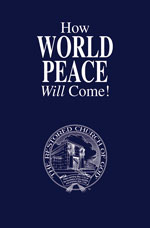 Still Picture Branch (NNSP) National Archives and Records Administrations
Still Picture Branch (NNSP) National Archives and Records Administrations
Article
With World War I, mankind hoped to end all future conflict. Then came WWII. Seventy years after Japan’s surrender in 1945, conditions from both global battles are pushing us toward WWIII.
Learn the why behind the headlines.
Subscribe to the Real Truth for FREE news and analysis.
Subscribe NowEach day, 492 World War II veterans die in the United States. With them go unique memories of struggle, pain and horror. Of the 16 million American men and women who served in that conflict, only around 850,000 are alive today—just 0.3 percent of the population—the National WWII Museum reported.
The story is similar in Japan, France, Britain, Italy, Germany and all across Europe.
As the number of eyewitnesses drops seven decades after the official end of WWII, the realities of global combat fade. One is that war on such a massive scale does not truly end with a surrender agreement (like Japan formally did on September 2, 1945) or raucous victory celebrations (like a passionate kiss between a sailor and stranger in New York City’s Times Square). Instead, its effects stubbornly linger.
After Nazi death camps were liberated, the Allies worked to help rehumanize emaciated survivors of Auschwitz, Dachau and the like. For seven years after the war, more than 250,000 Jewish displaced persons lived in German army barracks and repurposed concentration camp locations.
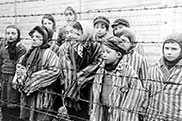 United States Holocaust Memorial Museum/Public Domain
United States Holocaust Memorial Museum/Public DomainThen there was the firebombing of both Axis and Ally cities such as Hamburg, London, Dresden, Coventry and Tokyo. The relatively new tactic involved bombing civilian areas to demoralize the population. In 1945, survivors had to put their lives back together amid burnt-out hulls of their neighborhoods.
Encyclopaedia Britannica described the aftereffects of firebombing for Germany: “…an estimated one-fourth of the country’s housing was destroyed or damaged beyond use, and in many cities the toll exceeded 50 percent.”
Imagine half of today’s San Francisco destroyed and inhabitants having to rebuild from the smoldering ruins.
Perhaps the ultimate case of firebombing occurred when atomic bombs Fat Man and Little Boy exploded over Hiroshima and Nagasaki, killing at least 130,000. About half died on the days the weapons were dropped, and the rest perished in the coming years from burns, injuries and radiation exposure.
Even U.S. veterans returning home grappled with the horrors of war. Many fell into deep depression and rarely discussed what they experienced. Talking meant reliving awful events.
In the years following the war, many thought that when the world saw the results of the Nazi death machine it would learn permanent lessons.
Nobel laureate and Holocaust survivor Elie Wiesel shared this feeling. He stated in an interview on nobelprize.org that “if anyone had told us in 1945 that there are certain battles we’ll have to fight again we wouldn’t have believed it. Racism, anti-Semitism, starvation of children…who would have believed that?”
Mr. Wiesel recounted his feelings following the conflict: “I was convinced that hatred among nations and among people perished in Auschwitz. It didn’t.”
WWII was not the first time there was hope that war would bring lasting positive effects. WWI, idealistically dubbed “the war to end all wars,” also failed to bring widespread change.
Both of these worldwide altercations have official end dates. Yet WWII was in many ways a continuation of WWI. The effects of both major 20th-century wars linger today—and are pushing us toward another global battle.
Continuous Conflict
Rather than end international hostility, WWII almost immediately gave rise to the Cold War. Most European nations were reeling from years of battle, which meant they were not in a position to help balance global power. The conditions were ripe for two superpowers to rise: the U.S. and the Soviet Union. The second world war also birthed the nuclear age, leading to an arms race.
While it looked like the world had sidestepped a nuclear showdown when the USSR disbanded in 1991, fears of total atomic annihilation are again growing. The biggest potential flashpoint is eastern Europe. Both NATO and Russian forces are building up in that region, and each side blames the other for ratcheting tensions.
The Christian Science Monitor reported that “NATO has been shifting troops and hardware eastward into the neighboring former Soviet Baltic states and Poland…and holding its own massive military maneuvers” near the strategic Russian stronghold of Kaliningrad.
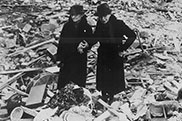 Still Picture Branch (NNSP) National Archives and Records Administrations
Still Picture Branch (NNSP) National Archives and Records Administrations“For NATO,” the news organization continued, “the buildup is seen as necessary to counter what it sees as Russia’s newly aggressive posture in Ukraine, and to reassure nervous east European allies who themselves escaped from Moscow’s control barely a quarter century ago.”
In June of this year, the U.S. officially announced the nation would ramp up its military presence in eastern and central Europe. The buildup will include pre-positioned tanks, artillery and other weaponry.
Russia, on the other hand, views the West as the aggressor. After the dissolution of the Soviet Union, the power bloc also ended the Warsaw Pact, its version of NATO. Yet NATO still exists today and Moscow thinks it is unfairly the target of the military alliance.
The Washington Post reported: “Russia would swiftly respond to any moves by the United States to build up military resources in Eastern Europe by fortifying its western border with more troops, tanks, planes and missile systems…”
According to the news outlet, the Kremlin would consider military ramp up from the U.S. “the most aggressive step since the Cold War.”
In addition, Moscow, Washington and other atomic powers have extensive plans to modernize their nuclear weapons arsenals. Particularly worrisome are missiles that are more precise and have smaller kill zones—which dramatically increase the likelihood of their use.
It is for these and other reasons that the Bulletin of Atomic Scientists put their doomsday clock at “three minutes to midnight.” The last time the globe was this close to total annihilation was 1984 at the height of the Cold War.
Such persistent problems prove the futility of war. Despite hopes for positive change during each conflict, armed engagement inevitably has the opposite effect: it creates and worsens problems. In fact, much of the economic, social and political woes seen today can be traced back to WWII.
Widespread Effects
At the end of the second world war, no one could have foreseen its wide-reaching effects on the globe. From that conflict came the era of antibiotics, plastic goods, jet engines for commercial air travel, and technology that eventually became computers.
 Still Picture Branch (NNSP) National Archives and Records Administrations
Still Picture Branch (NNSP) National Archives and Records AdministrationsYet the post-WWII world also made readily apparent a curious characteristic of man: he can have incredible advancement, but it is always coupled with terrible ills. America’s example makes this plain.
During the war, manufacturing began on a truly massive scale.
“In industry after industry Americans performed production miracles,” The National WWII Museum stated. “One story helps capture the scale of the defense effort. In 1940 President Roosevelt shocked Congress when he proposed building 50,000 aircraft a year. In 1944 the nation made almost double that number. Ford’s massive Willow Run bomber factory alone produced nearly one plane an hour by March 1944.
“To achieve increases like this, defense spending jumped from $1.5 billion in 1940 to $81.5 billion in 1945. By 1944 America led the world in arms production, making more than enough to fill its military needs. At the same time, the United States was providing its allies in Great Britain and the Soviet Union with critically needed supplies.”
This mass production did not end in 1945. Instead, the focus of such manufacturing turned to civilians. PBS explained: “After World War II, consumer spending no longer meant just satisfying an indulgent material desire. In fact, the American consumer was praised as a patriotic citizen in the 1950s, contributing to the ultimate success of the American way of life. ‘The good purchaser devoted to “more, newer and better” was the good citizen,’ historian Lizabeth Cohen explained, ‘since economic recovery after a decade and a half of depression and war depended on a dynamic mass consumption economy.’”
“Between 1945 and 1949, Americans purchased 20 million refrigerators, 21.4 million cars, and 5.5 million stoves, a trend that continued well into the 1950s.”
Relentless consumerism remains today, with few truly satisfied with what they have. Think of corporations pursuing ever-higher profits by whatever means necessary and individuals always needing the next new thing, even if it means racking up credit card debt to get it.
Government overspending also remains today, with the current U.S. federal debt at $18.3 trillion.
World War II upended U.S. society in other ways. It planted the seeds of a sexual revolution. A big reason for this was penicillin. While the drug was discovered in 1928, it was first mass-produced for Allied troops. Antibiotic treatments helped break the stigma of sexually transmitted diseases. Also, latex condoms were distributed to soldiers and their use was touted in instructional videos and lectures.
Both antibiotics and advanced contraceptives made it easier to have multiple sexual partners. Adultery among soldiers in the war and those on the home front led to a looseness of sexual activity post-war. Liberal attitudes towards sexual behavior have only worsened since that time and have been passed to each successive generation.
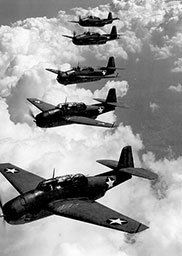 Still Picture Branch (NNSP) National Archives and Records Administrations
Still Picture Branch (NNSP) National Archives and Records AdministrationsThe greatest problem to emerge from WWII, however, was the breakdown of the family.
“World War II subjected the nation’s families to severe strain,” Encyclopedia of American Social History explained. “During the war, one-sixth of the nation’s families suffered prolonged separation from sons or fathers. Five million ‘war widows’ had to cook, clean, launder, and care for children alone. Wartime migration added to familial strain, as more than fifteen million civilians moved in search of new jobs. Wartime families faced a severe shortage of adequate housing and a lack of child-care facilities. These stresses contributed to a dramatic upsurge in the postwar divorce rate and to severe problems of child welfare, including tens of thousands of unsupervised ‘latchkey’ children and high rates of juvenile delinquency, venereal disease, and truancy.”
Record of History
Similar to WWII, the first world war continues to influence today’s events. One effect is the continuous tensions in the Middle East.
A Wall Street Journal article explained: “Shortly after the end of World War I, the French and British prime ministers took a break from the hard business of redrawing the map of Europe to discuss the easier matter of where frontiers would run in the newly conquered Middle East.”
“The resulting Middle Eastern states were often artificial creations, sometimes with implausibly straight lines for borders. They have kept going since then, by and large, remaining within their colonial-era frontiers despite repeated attempts at pan-Arab unification.”
These “artificial creations” include nations with many religious and ethnic groups—often groups that are sworn enemies. For example, Iraq has the Kurds in the north, Sunni Muslims in the west, and Shia Muslims to the east.
Much of the problems in the region stem from the West hastily divvying up the region nearly 100 years ago.
Yet the effects of WWI can also be seen in a more obvious way. France is still cleaning up shells from that war.
 Air Force Personnel/ (Left); Charles Levy/ (Right); National Archives and Records Administration/Binksternet, CC By-SA 3.0
Air Force Personnel/ (Left); Charles Levy/ (Right); National Archives and Records Administration/Binksternet, CC By-SA 3.0A journalist described the situation in Orion Magazine: “The vast area around the French city of Verdun remains suspended in the year 1916. During the First World War, these hills and gorges were cratered by a continuous ten-month-long artillery bombardment more intense than any before and any since. The mature beech forests that cover the hills were home to some of the Great War’s most bitter fighting; as many as 150 shells fell for every square meter of this battlefield. As well as being the longest battle of the Great War, the Battle of Verdun also has the ignominy of being the first test of modern industrialized slaughter.”
In 1918, the amount of unexploded shells and grenades in the region spurred the government to fence off nearly 16 million acres—approximately 10 percent of the entire country.
The government actually has a special unit that disposes of these weapons known as demineurs. Unexploded ordinances are found everywhere from farm fields to backyards as the shells work their way above ground. A century after the conflict, the largest German shells—which weigh 2,200 pounds—have not even begun to surface. According to Orion Magazine, at the current rate of work, demineurs will be clearing away explosives for the next 900 years.
Perhaps most distressed by this would be Arthur Nobel, who created modern gunpowder and dynamite. The book Aftermath: The Remnants of War summarized the inventor’s legacy: “The chain of technology Nobel initiated has led to more than 100 million deaths by war since he died, making this—by hundreds of times—the bloodiest century in the history of the world.”
Of course, Nobel did not want this. He wanted his inventions to be used peaceably. If they were used as weapons, he theorized that such an application would be short-lived.
He remarked to a political activist friend: “Perhaps my factories will put an end to war sooner than your [peace] congresses: on the day that two army corps can mutually annihilate each other in a second, all civilized nation will surely recoil with horror and disband their troops” (nobelprize.org).
Later in Nobel’s life (he died before WWI), the inventor began to see that he would be remembered for creating instruments of war. He did everything in his power to change that perception, which gave rise to the Nobel Peace Prize. Yet even now, the prize has still failed to end armed conflict.
In a sense, Nobel was a microcosm of humanity itself. It is capable of ingenious advancement and the best of intentions, yet the ultimate results are always negative.
Why is this? We should have learned our lesson with the horrific shelling of WWI. We should have ensured we would never again have a Holocaust, yet genocide has continued in the years since. Hiroshima and Nagasaki should have halted the advancement of atomic weapons, yet here we are heading toward a scenario where the use of a nuke is not only possible—it is probable.
Throughout the thousands of years of man’s history, the same lessons should have been learned. We vow “never again” over and over, and then find ourselves repeating the same mistakes soon after.
There is an even greater lesson here: man is utterly incapable of solving his most vexing problems. The record of history clearly proves this, and a few men throughout history have realized this.
Before WWII, Winston Churchill saw Germany rising again and said this in a 1935 speech before the House of Commons (emphasis added): “There is nothing new in the story…It falls into that long, dismal catalogue of the fruitlessness of experience and the confirmed unteachability of mankind. Want of foresight, unwillingness to act when action would be simple and effective, lack of clear thinking, confusion of counsel until the emergency comes, until self-preservation strikes its jarring gong—these are the features which constitute the endless repetition of history.”
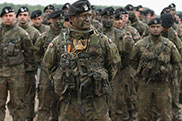 Sean Gallup/Getty Images
Sean Gallup/Getty Images Eighteenth-century philosopher Georg Wilhelm Friedrich Hegel similarly stated, “We learn from history that we do not learn from history.”
In the Bible book of Proverbs, King Solomon took this one step further: “There is a way which seems right unto a man, but the end thereof are the ways of death” (14:12).
From WWI until today, well over 100 million have died from war. How many more have died from manmade starvation and disease?
Death is the legacy of mankind. Even our ingenious solutions turn on us. Antibiotics are a perfect example: they were a medical marvel when introduced, but today they have spawned virtually unstoppable drug-resistant forms of MRSA, C. difficile, and other infectious diseases.
Man’s Legacy
Step back and take a big-picture view of modern society. Much of it is the product of lightning-fast advancement over the last 100 years, but it is also the culmination of thousands of years of the “way which seems right unto a man.”
Most are unaware that the Bible contains a considerable amount of text explaining the culmination of man’s ways. It calls this period variously the “time of the end” and “last days.”
Daniel states that during this time “many shall run to and fro, and knowledge shall be increased” (12:4).
Air travel surely makes it possible to “run to and fro” like never before. And, according to one estimate, the total fund of knowledge is currently doubling about every 12 months—and on pace to double every 12 hours.
Yet the biblical picture of modern society shows that this incredible advancement comes with a seedy underbelly.
Jesus Christ said of this time: “And you shall hear of wars and rumors of wars…For nation shall rise against nation, and kingdom against kingdom: and there shall be famines, and pestilences…” (Matt. 24:7).
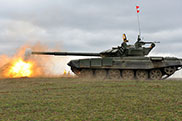 Sergey VenyAvsky/AFP/Getty Images
Sergey VenyAvsky/AFP/Getty Images Chapter 3 of II Timothy describes the breakdown of character seen everywhere today: “This know also, that in the last days perilous times shall come. For men shall be lovers of their own selves, covetous, boasters, proud, blasphemers, disobedient to parents, unthankful, unholy, without natural affection, trucebreakers, false accusers, incontinent, fierce, despisers of those that are good” (vs. 1-3).
All of this is leading to a terrible time of trouble. Matthew 24:21 states: “For then shall be great tribulation, such as was not since the beginning of the world to this time, no, nor ever shall be.”
Ezekiel 6:6 states this about the Great Tribulation: “In all your dwelling places the cities shall be laid waste, and the high places shall be desolate…”
This is describing nuclear war! Verse 22 of Matthew 24 adds to the picture: “Except those days should be shortened, there should no flesh be saved [alive]: but for the elect’s sake those days shall be shortened.”
Nuclear weapons are the only technology capable of snuffing out all human life. Yet notice that God will intervene at this time—and save mankind from total annihilation.
While Matthew 24 is a chapter chock-full of bad news, verse 14 describes something incredibly positive to occur in the last days: “And this gospel of the kingdom shall be preached in all the world for a witness unto all nations; and then shall the end come.”
The message that will reach the entire globe is the very best news of all time.
Ultimate Lesson
The gospel is about the kingdom of God. Put another way, the gospel is about the Family of God. Humanity was created for an awesome purpose: God is expanding His Family (Gen. 1:26; I John 3:1-2). He wants everyone to be happy, joyful and to live in peace and comfort. He wants all to be productive, prolific and successful—ultimately with eternal life.
Humanity must, however, make its own decision. If not, God would have automatons as sons and daughters.
It is for this reason that we have had thousands of years to try out our own systems of government, religions and ways of life. God is allowing man to see that—apart from his Creator—he cannot find true peace.
Obviously, it will take drastic action for man to finally learn this lesson. Remember that both world wars, the Holocaust, and the horrors of nuclear war have not caused him to do this.
Jeremiah 10 describes the Great Tribulation—which could also be called WWIII—that will come on Israel and Judah. Yet the passage shows why God is allowing such events to occur, and the response He desires from mankind.
Verse 22 describes an army that will make cities “desolate.” The destruction that follows is aimed at getting the attention of those nations and for them to finally cry out: “I know that the way of man is not in himself: it is not in man that walks to direct his steps” (vs. 23).
Seeing nuclear destruction—along with the worst war, famine and disease of all time—the inhabitants of the land will finally have to admit that their ways do not work. This is what God desires.
Once this is done, they must turn to God for the right way to live: “O Lord, correct me [show me where I am off course], but with judgment; not in Your anger, lest You bring me to nothing” (vs. 24).
God does not relish such punishment, but there is no other way to get man’s full attention. In Ezekiel 33, the Creator states, “I have no pleasure in the death of the wicked; but that the wicked turn from his way and live…” (vs. 11).
In addition, God’s Plan to expand His Family includes giving every man and woman a fair chance at eternal life. His earnest desire is to “have all men to be saved, and to come unto the knowledge of the truth” (I Tim. 2:4).
Finally Peace
Yet terrible times are coming. Man has not yet learned the overarching lesson of history: he cannot direct his steps.
When Jesus returns, He knows how hard it will be to finally teach this fact to a stubborn humanity. Matthew 24 states that at the time of His coming “all the tribes of the earth mourn” (vs. 30). When Christ punishes the globe’s inhabitants to show where they are off course, the typical response will be to blaspheme the God of heaven and refuse to change (Rev. 16:11, 21).
For this reason, Jesus Christ will return in battle mode. Throughout the Old Testament, it says He will come as the “Lord of Hosts,” or the Lord of Armies.
Revelation 19 paints this picture: “…and behold a white horse; and He [Christ] that sat upon him was called Faithful and True, and in righteousness He does judge and make war…And the armies which were in heaven followed Him upon white horses…” (vs. 11, 14).
Daniel 2:44 adds further details showing that in the last days “shall the God of heaven set up a kingdom, which shall never be destroyed: and the kingdom shall not be left to other people, but it shall break in pieces and consume all these kingdoms”—all the ineffective manmade systems of government—“and it shall stand forever” (vs. 44).
In other words, mankind is so stubborn that Jesus Christ has to come and force peace.
With the governments of men out of the way, God will be able to teach the right way to live: “And He shall judge among the nations, and shall rebuke many people: and they shall beat their swords into plowshares, and their spears into pruninghooks: nation shall not lift up sword against nation, neither shall they learn war any more” (Isa. 2:4).
It is at this time that man will finally realize his ways do not work.
But you can learn this now. As the number of eyewitnesses of WWII drops and the lessons of that time fade away, you can choose a different path. All those who come to truly understand that man’s ways do not work and humbly ask for God to correct their ways—then act on that course correction!—can enjoy true peace and prosperity at this time.
For a fuller picture of God’s Plan to bring peace to the entire globe, order a free copy of How World Peace Will Come!

